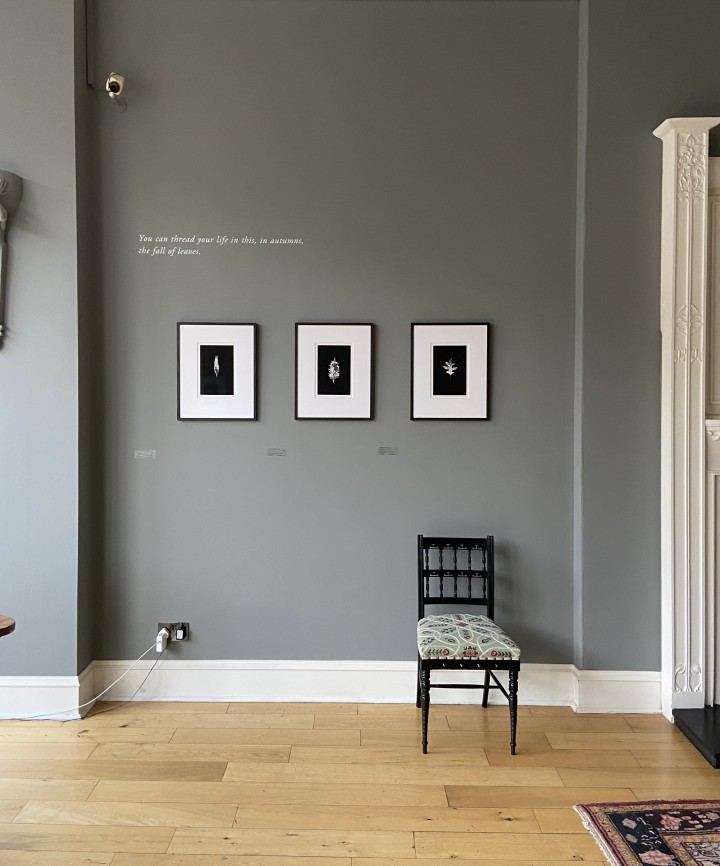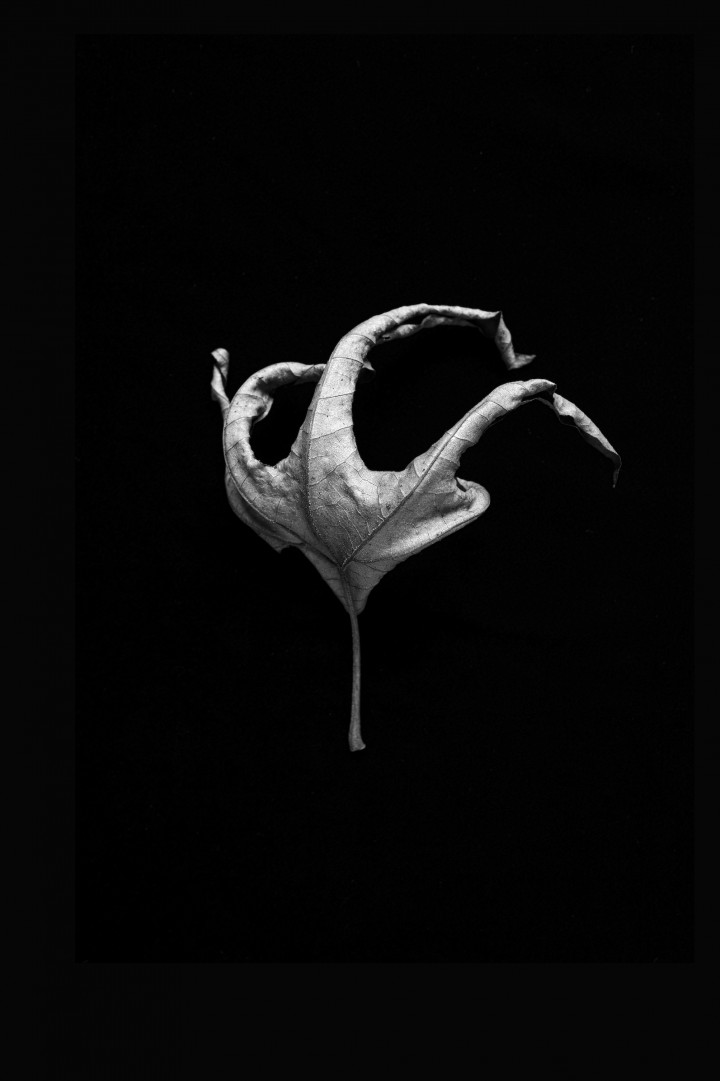Scottish Art News
Latest news
Magazine
News & Press
Publications
Norman McBeath and Edmund de Waal: Perdendosi
By Susan Mansfield, 16.02.2022

During the first lockdown, photographer Norman McBeath began to capture images of dying leaves. These were not autumn leaves, resplendent with colour; they were last year’s leaves, bleached and wispy, dessicated, crumbling. The title of the show, Perdendosi, is a musical term meaning "to gradually die away”. Trying to describe them, one can’t really avoid the word “dead”.
Each of these 12 hand-printed photographs is a study of such a leaf. They are as I’ve just described: twisted, paper-dry, poised on the cusp of disintegration. Yet they are also transformed. Shot in black and white against a dense black background, they become infused with light. Weightless, they seem to float and shimmer, caught in the act of falling or lifted by a sudden breeze. They are perfectly still, yet full of motion.
McBeath quotes the Italian artist Giorgio Morandi, who painted the same collection of jars and bottles for much of his life: “To achieve understanding it is necessary not to see many things but to look hard at what you do see.” He gives these twelve leaves his full, devoted attention, and invites us to do the same, absorbing the contradictions: barely alive, poignant, illuminated, beautiful.
Accompanying the images is a text created in response to the leaves by ceramicist, artist and writer Edmund de Waal, a wide-ranging meander through the leaves of literature: Proust, Walter Benjamin, Rilke (for whom “each leaf falls as if it were motioning ‘no’”), Wallace Stevens, Paul Celan.
 Norman McBeath, 'Perdendosi VI', 2021. Courtesy the Artist and the Fine Art Society.
Norman McBeath, 'Perdendosi VI', 2021. Courtesy the Artist and the Fine Art Society.
He describes Goethe writing under an oak in Ettersberg Forest, in the area which would be cleared in 1937 for the building of Buchenwald Concentration Camp, the oak left standing at its centre until the camp was bombed by the Allies in 1944. In a few paragraphs, he spools out from McBeath’s leaves to the darkest of human tragedies.
This is one way to read them, and de Waal’s writing is elegantly persuasive. However, here, he is doing something very different to McBeath. By training his lens on each leaf, McBeath is engaged in a practice of extreme particularity: what is the significance of one thing, of this thing? What makes it unique? An attempt, in de Waal’s words, “to understand the singular in this endless plurality”.
The images seem to speak to those strange, early days of the pandemic when fear filled the headlines, tiny things became weighted with meaning, time seemed almost to stand still and nature delivered a glorious spring. It was period of contradictions - loss and vitality, beauty and fragility - when it felt important to consider the small things of the world, and to welcome tiny acts of resistance.
Norman McBeath: Perdendosi, The Fine Art Society, Edinburgh, until Friday 26th February.




